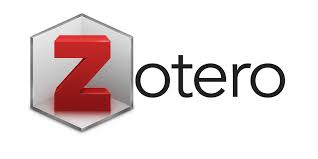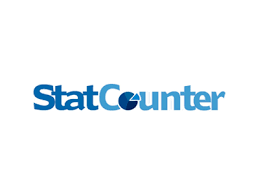Etnomatematika Tradisi Meron di Sukolilo dan Kaitannya dengan Pembelajaran Geometri
DOI:
https://doi.org/10.29240/ja.v3i1.2672Keywords:
Ethnomathematics, Geometry, MeronAbstract
As an effort to assist in improving the quality of education, mathematics is taught to students in formal educational institutions from the basic level of education. However, many students do not like mathematics and consider it the most difficult subject. To address this, teachers can apply ethnomathematics learning to learning activities. One of the cultures that can be used is the meron tradition. The meron tradition is one of the traditions of Islamic ritual ceremonies in Sukolilo which is intended as an event to commemorate the birthday of the Prophet Muhammad. The purpose of this study is to examine the existence of ethnomathematics in the meron tradition in Sukolilo, on the topic of geometry in learning mathematics. This research was conducted using qualitative research with an ethnographic approach. The research data collection techniques about the meron tradition, using interview techniques, and documentation with research instruments include interview guidelines and field notes. Interviews were conducted with five residents of Sukolilo. Data analysis used descriptive qualitative method. The results showed that the concept of ethnomathematics in the meron tradition can be seen in each part of the meron. In the mustaka section there is a wreath in the form of a flat circular shape and in the miniature form of the mosque there is a rectangular shape of a cube and pyramid, the gunungan section has a cone shape, the ancak section has two flat shapes, namely a rectangle and a trapezoid.
Downloads
References
Abi, A. M. (2017). Integrasi Etnomatematika dalam Kurikulum Matematika Sekolah. JPMI (Jurnal Pendidikan Matematika Indonesia), 1(1), 1. https://doi.org/10.26737/jpmi.v1i1.75
Atabik, A. (2020). Interaksionisme Simbolik Ritual Meron di Indonesia dan Relevansinya dalam al Quran. Fikrah, 8(1), 137. https://doi.org/10.21043/fikrah.v8i1.7216
Auliya, N. N. F. (2019). Etnomatematika Kaligrafi Sebagai Sumber Belajar Matematika Di Madrasah Ibtidaiyah. Jurnal Pendidikan Matematika (Kudus), 1(2). https://doi.org/10.21043/jpm.v1i2.4879
Crato, N. (2020). Improving a Country ’ s Education. https://doi.org/https://doi.org/10.1007/978-3-030-59031-4
D'Ambrosio, U. (1985). Ethnomathematics and Its Place in the History and Pedagogy of Mathematics. For the Learning of Mathematics, 5(1), 44-48. Retrieved April 29, 2021, from http://www.jstor.org/stable/40247876
Fahrida, N. (2012). Aspek Pendidikan Nilai Religius dalam Pelaksanaan Tradisi Meron (Studi Kasus di desa Sukolilo Kecamatan Sukolilo Kabupaten Pati).
Hasyim, M. (2011). Penelitian Makna Arsitektur Masjid Pakualaman Dalam Tinjauan Kosmologi Jawa. Analisa, XVIII(02), 211–227.
Huberman, M., & Miles, M. B. (2002). The qualitative researcher's companion. Sage.
Maisyanah. (2018). Internalisasi Nilai-nilai Pendidikan Agama Islam pada Tradisi Meron. Edukasia Jurnal Penelitian Pendidikan Islam.
Maisyanah, M., & Inayati, L. (2019). Internalisasi Nilai Pendidikan Agama Islam pada Tradisi Meron. Edukasia : Jurnal Penelitian Pendidikan Islam. https://doi.org/10.21043/edukasia.v13i2.4627
Makhmudah, S. (2018). Analisis Literasi Matematika terhadap Kemampuan Berpikir Kritis Matematika dan Pendidikan Karakter Mandiri. Prisma, 1, 318–325.
Moleong, L. J. (2017). Metodologi Penelitian Kualitatif (Edisi Revisi). PT. Remaja Rosda Karya.
Nur, R., Hobri, & Dian. (2015). Eksplorasi Etnomatematika Masyarakat Suku Madura di Situbondo. Artikel Ilmiah Mahasiswa, II(1), 1–4.
OECD. (2019). PISA 2018 Results (Volume I). https://doi.org/10.1787/5f07c754-en
Pramudyani, F. N. H. (2011). Upacara Tradisi Meron Relevansinya Dengan Kehidupan Masyarakat Desa Sukolilo Kabupaten Pati. JPP1(2).
Prasetyawan, D. G. (2016). Diagnosis Kesulitan Belajar Matematika Siswa Kelas IV SD Negeri Congkrang 1 Muntilan Magelang. Basic Education, 5(26), 2481–2488.
Rahimah, N., & Asy’ari, A. (2017). Keterampilan Dasar Geometri Siswa Kelas V dalam Menyelesaikan Soal Bangun Datar Berdasarkan Kemampuan Matematika Di MI Al Istiqomah Banjarmasin. Math Didactic, 3(1), 55–63. https://doi.org/10.33654/math.v3i1.55
Rahmawati, D. ., Triyanto, & Purwanto. (2019). Meron sebagai Karya Seni Rupa: Kajian Nilai Estetik dan Fungsinya dalam Tradisi Perayaan Maulid Nabi di Desa Sukolilo Pati. Journal of Arts Education.
Rakhmawati, R. (2016). Aktivitas Matematika Berbasis Budaya pada Masyarakat Lampung. Al-Jabar : Jurnal Pendidikan Matematika, 7(2), 221–230.
Ramadani, Y. A., Praska, M., Christian, T. F., & Dharma, U. S. (2014). Aktivitas Designing Serta Implementasinya dalam Pembelajaran. 241–246.
Rohaeti, E. E. (2011). Transformasi Budaya Melalui Pembelajaran Matematika Bermakna di Sekolah. Jurnal Pengajaran Matematika dan Ilmu Pengetahuan Alam, 16(1), 139. https://doi.org/10.18269/jpmipa.v16i1.274
Wahyudin. (2018). Etnomatematika dan Pendidikan Matematika Multikultural. Prosiding Seminar Nasional Pendidikan Matematika Etnomatnesia, 1–19.
Wahyuni, A., Aji, A., Tias, W., & Sani, B. (2013). Peran Etnomatematika dalam Membangun Karakter Bangsa: Penguatan Peran Matematika dan Pendidikan Matematika untuk Indonesia yang Lebih Baik.
Downloads
Published
Issue
Section
Citation Check
License
Authors who publish with ARITHMETIC: Academic Journal of Math agree to the following terms:
- Authors retain copyright and grant the journal right of first publication with the work simultaneously licensed under a Creative Commons Attribution-NonCommercial-ShareAlike 4.0 International License (CC BY-NC-SA 4.0) that allows others to share the work with an acknowledgment of the work's authorship and initial publication in this journal.
- Authors are able to enter into separate, additional contractual arrangements for the non-exclusive distribution of the journal's published version of the work (e.g., post it to an institutional repository or publish it in a book), with an acknowledgment of its initial publication in this journal.
- Authors are permitted and encouraged to post their work online (e.g., in institutional repositories or on their website) prior to and during the submission process, as it can lead to productive exchanges, as well as earlier and greater citation of published work (See The Effect of Open Access).







